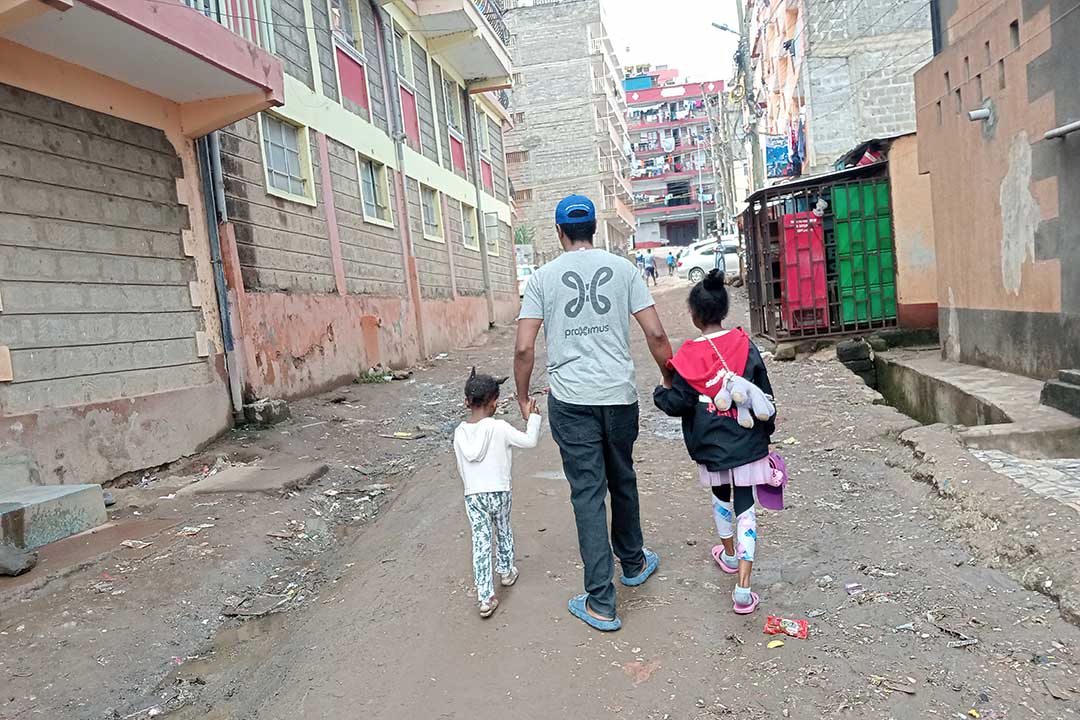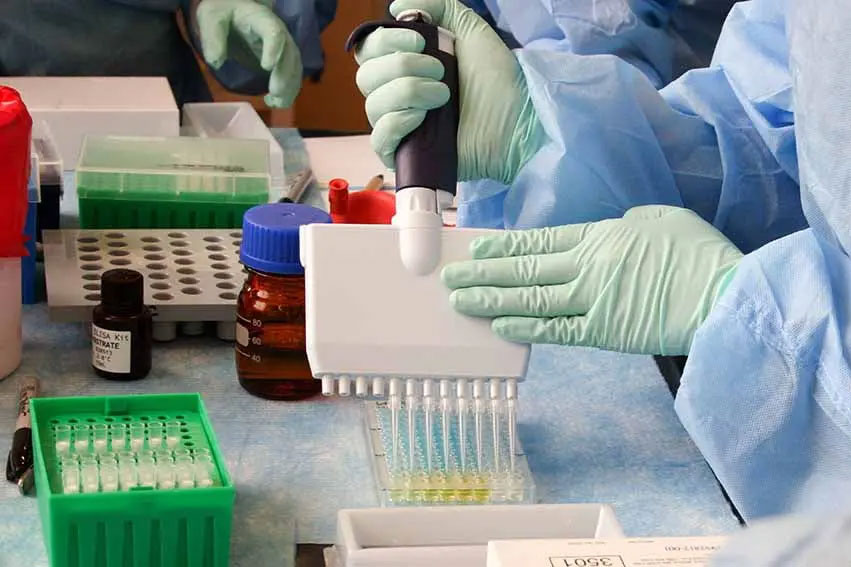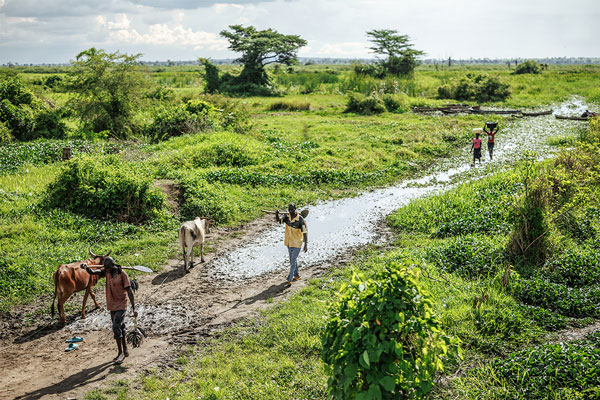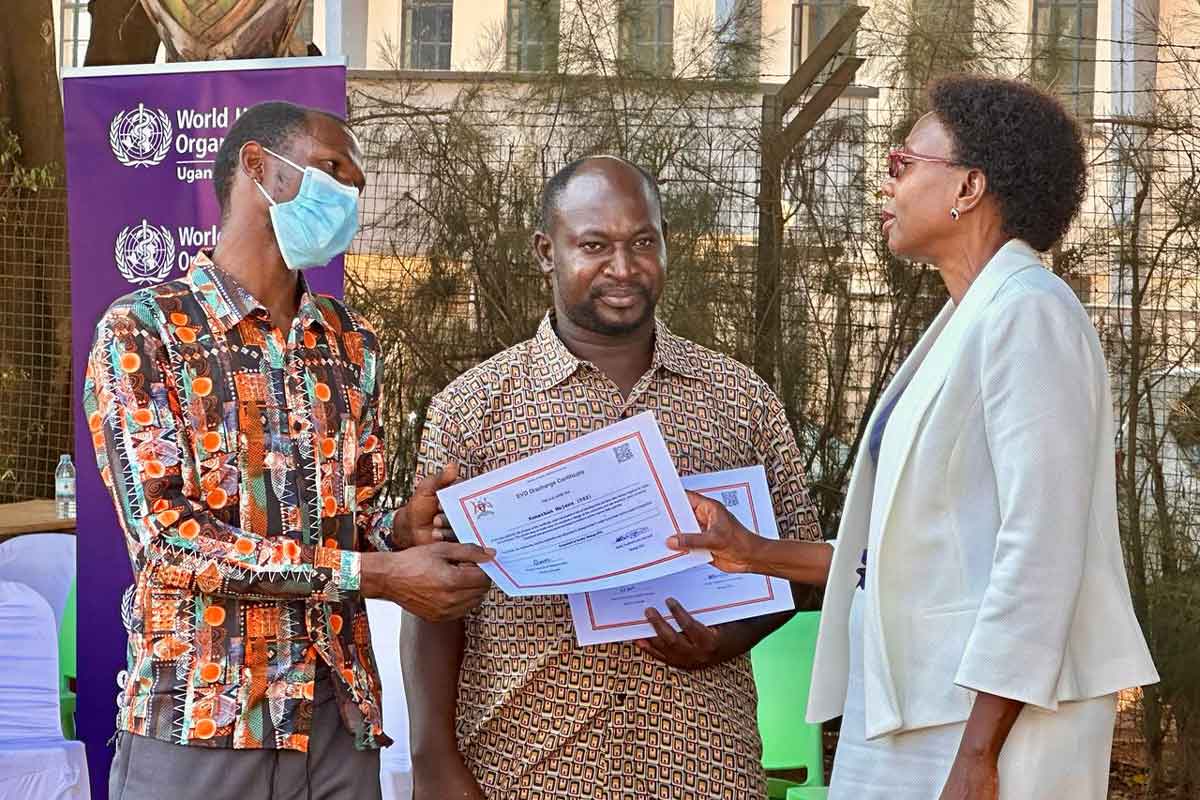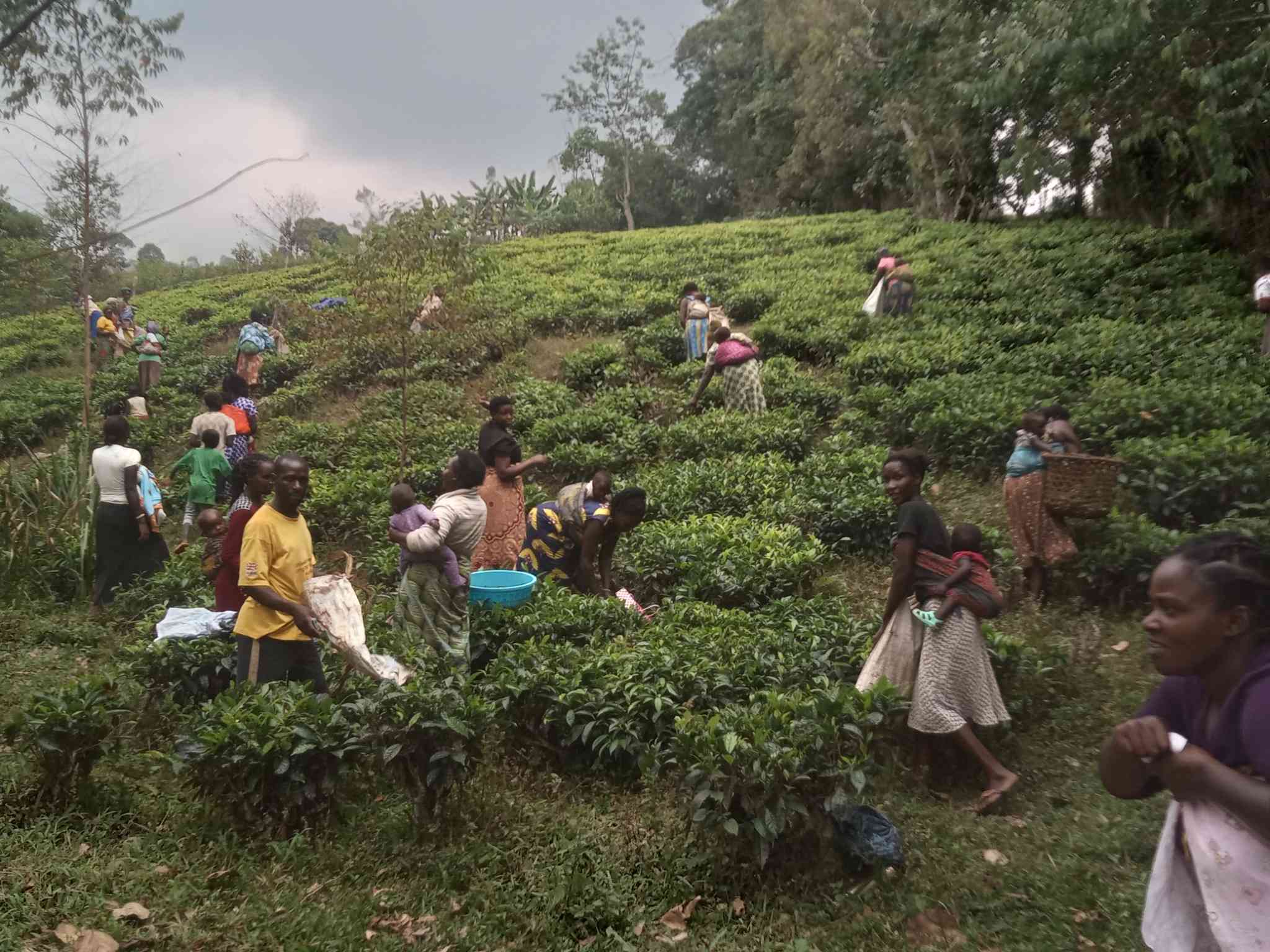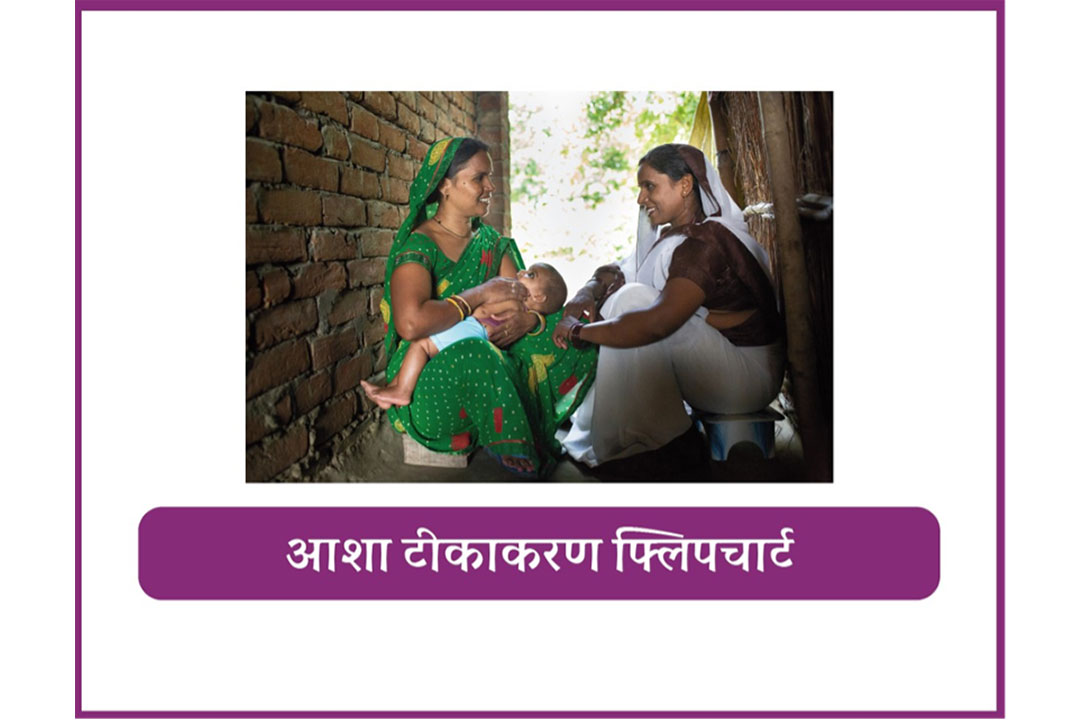Uganda steps up cholera surveillance along imperilled borders
Amid an influx of people from cholera-hit DRC and South Sudan, Uganda has upped its cross-border disease surveillance.
- 7 July 2025
- 6 min read
- by John Agaba
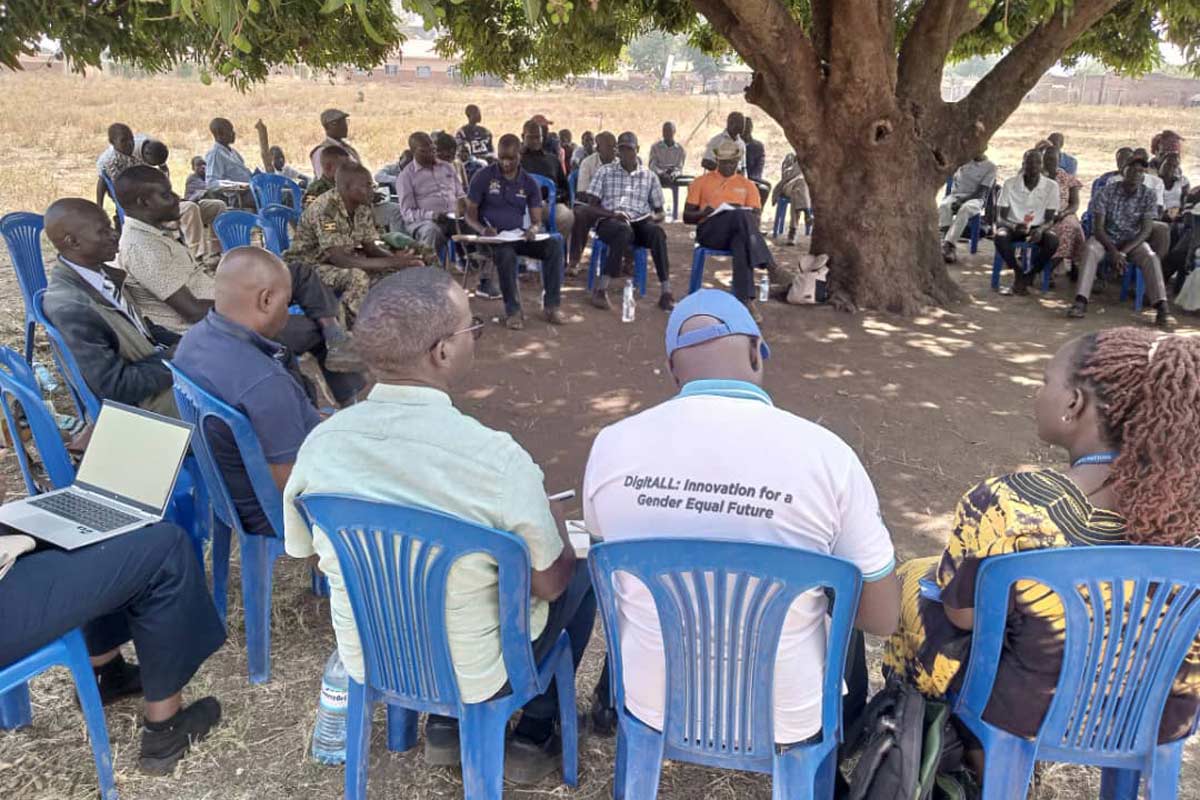
Dr Denis Ocula needed a strategy. Cholera had killed a woman and infected an additional 106 people in his district of Lamwo, near Uganda’s border with South Sudan, and he knew only too well that the disease can spread at wildfire rates.
So, Ocula – who is a health officer for the district – called a meeting with local health workers, village health teams (VHTs) and Lamwo community leaders to figure out a plan.
The team agreed to prioritise testing and treatment of the deadly diarrhoeal disease, and to set up a temporary treatment facility to treat confirmed cases at Agoro Health Centre III, located at the epicentre of the district’s outbreak.
They also agreed to rally the community to report persons who presented with common cholera symptoms – including vomiting, watery diarrhoea, and severe dehydration. Cholera spreads from person to person through contaminated food or water, so infected individuals needed to be brought into care.
But there was a problem. Anecdotal research linked the outbreak to a larger epidemic that was sweeping through South Sudan – Uganda’s immediate neighbour to the north. There, some 919 people had been killed by mid-April, and nearly 50,000 had been infected.
“This changed everything,” said Ocula in an interview with VaccinesWork. “It meant that we couldn’t just focus on treating confirmed cases in isolation to stop the outbreak. We needed a comprehensive strategy to stop the outbreak in Agoro sub-county, but at the same time improve cross-border surveillance.
“We needed a strategy to monitor our [160-kilometre] borderline with South Sudan and to recruit volunteers to screen the hundreds of refugees and other travellers from the country.”
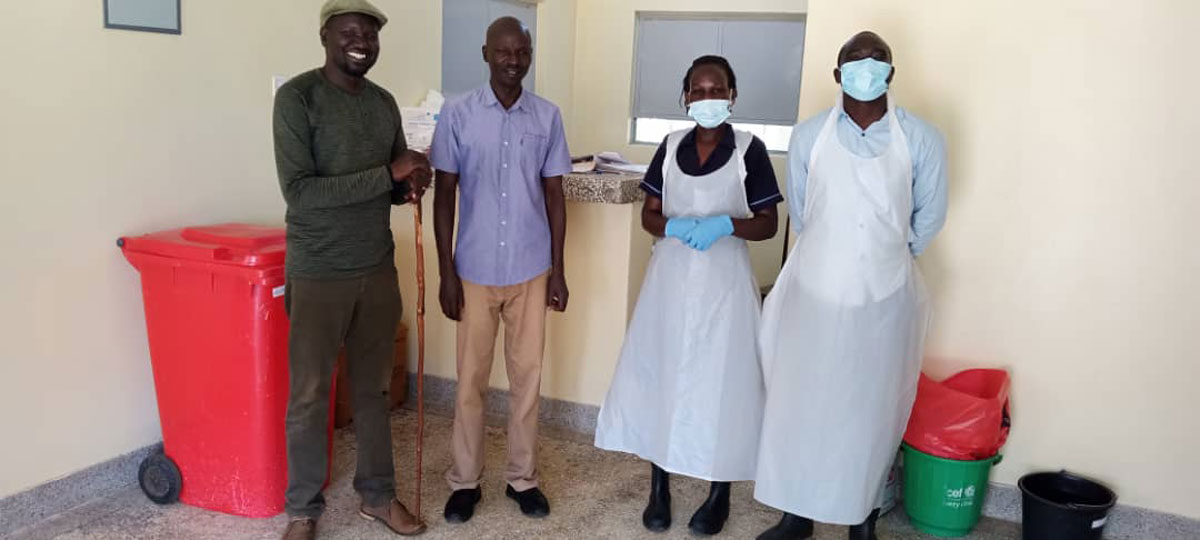
Manning the border
So, Ocula and his team convened another meeting. The team agreed to deploy a group of VHTs and other volunteers at common border crossing points, with instructions to stop any travellers who presented with cholera symptoms.
Ocula and his team are typical of some more than 50 health workers helping to improve surveillance for cholera along Uganda’s border with both South Sudan and the Democratic Republic of the Congo (DRC), in a bid to halt cross-border transmission of the bacterium.
According to UNICEF, close to 200,000 cholera cases were reported from eastern and southern Africa in the 15 months to the end of March, 2025.
Angola, DRC and South Sudan accounted for more than 90% of these – with Angola registering 743 deaths and 25,168 cases of cholera this year and DRC recording 694 deaths and at least 31,032 cases, according to Professor Yap Boum, who is the deputy head of the Incident Management Support Team at Africa CDC.
South Sudan has recorded 694 deaths and more than 40,000 cases this year. Both DRC and South Sudan border Uganda – with the three countries sharing approximately 1252 kilometres of largely porous borders.
Surveillance measures
Porous borders aside, Uganda has long been a crucial refugee destination, hosting approximately 1.8 million refugees, principally from DRC and South Sudan. With conflicts ongoing to the north and west, the influx is not slowing. Sixty thousand newcomers arrived in just the three months to May 2025.
For agents of public health, that calls for a particular kind of consideration. As cholera transmission in the DRC and South Sudan intensified, Uganda’s Ministry of Health passed guidelines on improving surveillance, empowering people like Ocula with access to travellers for screening.
Initial screening is verbal. As Dr Godfrey Bwire, assistant commissioner for health services at the Ugandan Ministry of Health and head of public health emergency preparedness and response in the country, explained: “As soon as refugees from any of these cholera-stricken countries reach our borders, we ask them simple questions such as if they have experienced vomiting, dehydration or acute watery diarrhoea in the last seven days.”
Individuals who say that they have experienced such symptoms are isolated and tested for cholera, said Bwire in an interview with VaccinesWork. “We use rapid diagnostic tests (RDTs) for cholera to detect the bacteria and, later, laboratory (PCR) tests to confirm these,” he said.
He said travellers who test positive are started on rehydration treatment: intravenous fluids for severe cases and oral rehydration salts for mild cases. Contacts of confirmed cases are given prophylactic doxycycline to prevent them from developing the disease and are monitored for any signs of disease for 14 days at one of several reception centres, before they can be allowed or resettled into the country.
Apart from this, the VHTs and health workers provide chlorine-based tablets to treat water and improve access to safe drinking water for the refugees while in transit.
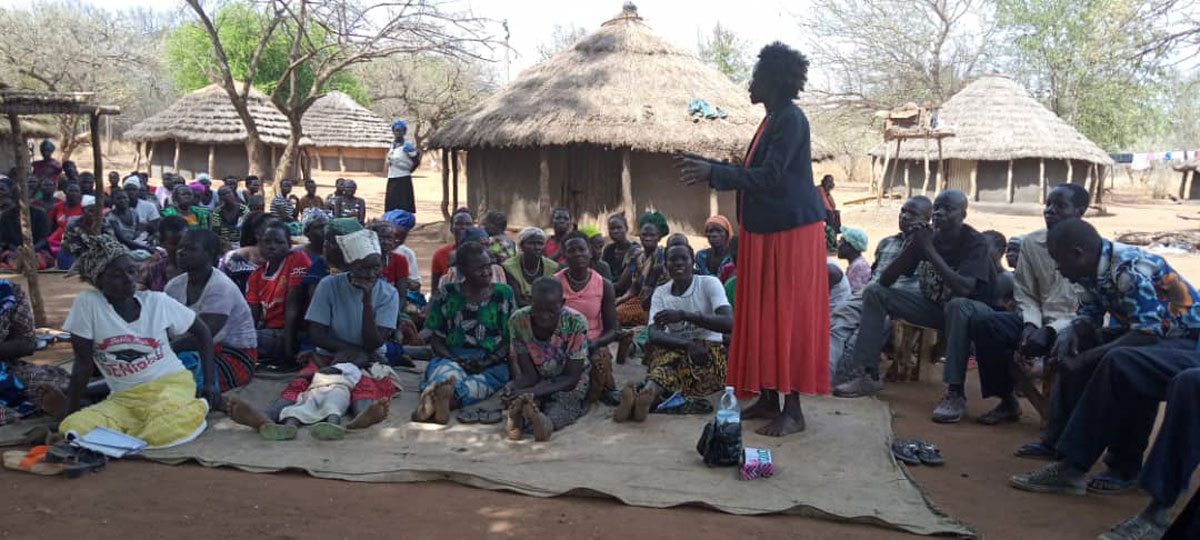
Stabilising threat
The interventions have worked. Apart from Lamwo, which registered 106 cases, Uganda’s exposure has been limited to “sporadic incidents of the disease, mainly in refugee hosting communities near the DRC and South Sudan border,” Bwire said.
“The incubation period of cholera typically ranges from a few hours to five days,” said Bwire. “If untreated, victims can develop severe watery diarrhoea and dehydration which can lead to death. So, we have to be decisive and stop the bacteria before it gets into our communities.”
Dr Charles Olaro, Director General of Health Services at the Ugandan Ministry of Health, who issued the national guidelines, said the risk of cholera was considerably increased during humanitarian emergencies. Significant population movements and frequent disruption of access to healthcare services, including hygiene, sanitation and clean water, were factors in the rising threat.
But Olaro added that screening, early detection and confirmation of cases, followed by appropriate, timely and well-coordinated multi-sectoral response could reduce trans-boundary spread of cholera and prevent local spread of the disease as well as reduce its economic burden on the country.
Speaking at a recent press conference, Boum of Africa CDC said African heads of state had made a commitment to “accelerate investment, cross-border coordination, and vaccine access” to eliminate cholera by 2030.
Oral cholera vaccines from the Gavi-supported global stockpile are often used in as part of emergency responses - nearly 30 million doses have already been shipped this year by Gavi and its partners to Angola, DRC, Ethiopia, Ghana, Mozambique, South Sudan and Sudan - but in high-risk zones preventive deployment can be extremely effective.
Have you read?
Improved sanitation muffles threat
In Lamwo, Ocula says a diverse alliance of leaders and health workers have worked hard to improve water, sanitation, and hygiene conditions, to tamp down the risk of new outbreaks.
“Like dysentery, cholera is mainly a hygiene disease,” said Ocula. “So, we need to sort out the challenge of hygiene in our community. The VHTs have educated our people to frequently wash their hands with soap and water, mainly before eating or after using a toilet.”
We have cordoned off River Okura that was contaminated (during the outbreak) and want to improve access to safe drinking water – ideally boiled, or treated with chlorine or another disinfectant.”
Ocula and his team have started an aggressive campaign to improve latrine access in the district so that every household has proper sanitation and waste management facilities.
“We have had a challenge of open defecation,” said Ocula. “Now we have improved latrine coverage from 45% to 81% in the last two months. Our target is to reach 100% and ensure that every household has a latrine.
“We can stop this disease if people wash their hands (with soap and water) and have safe drinking water and proper sanitation facilities,” he said.
More from John Agaba
Recommended for you


